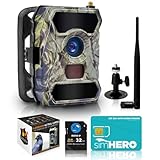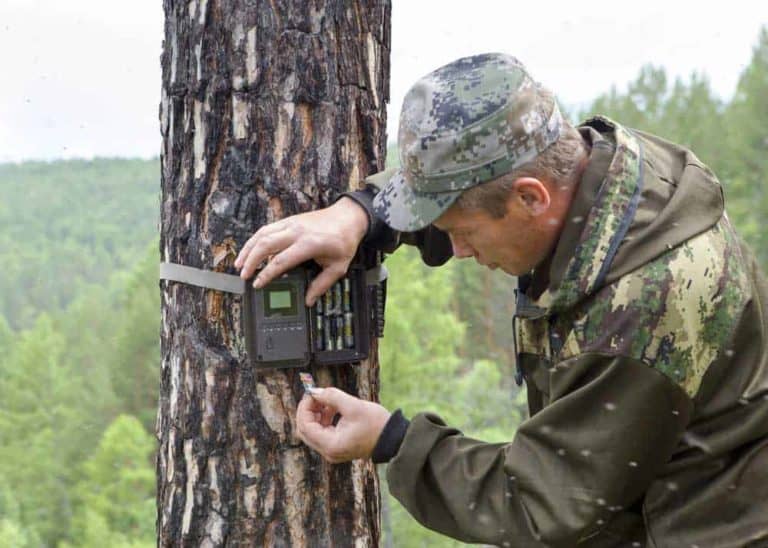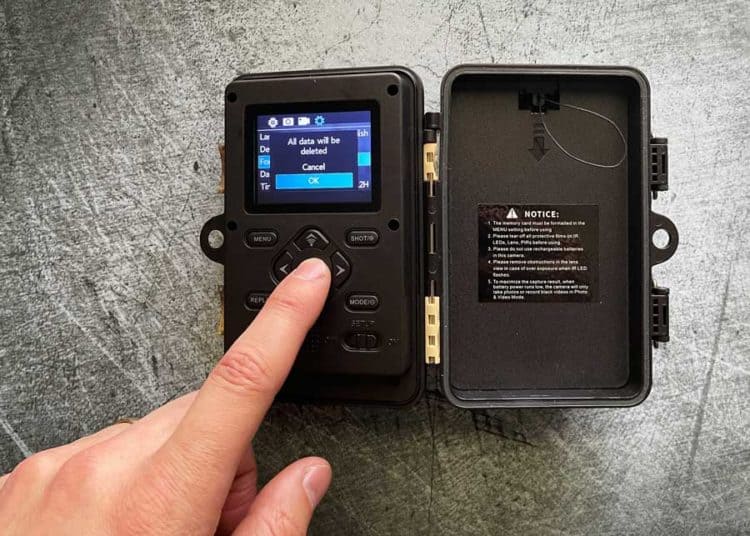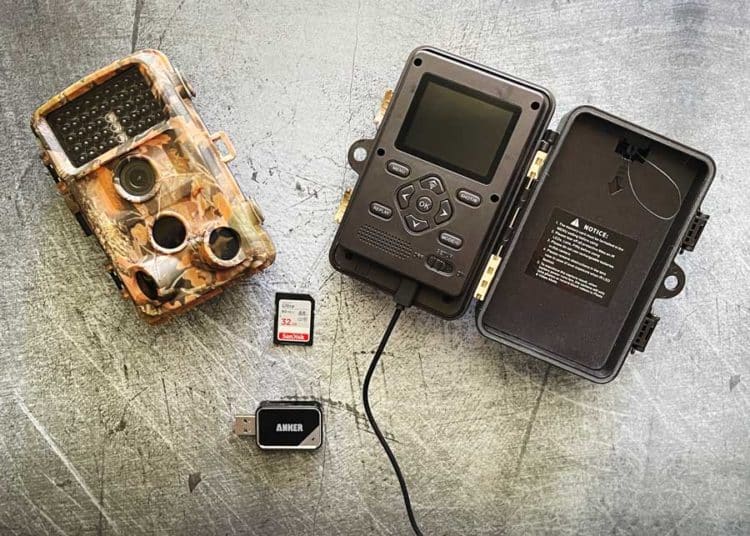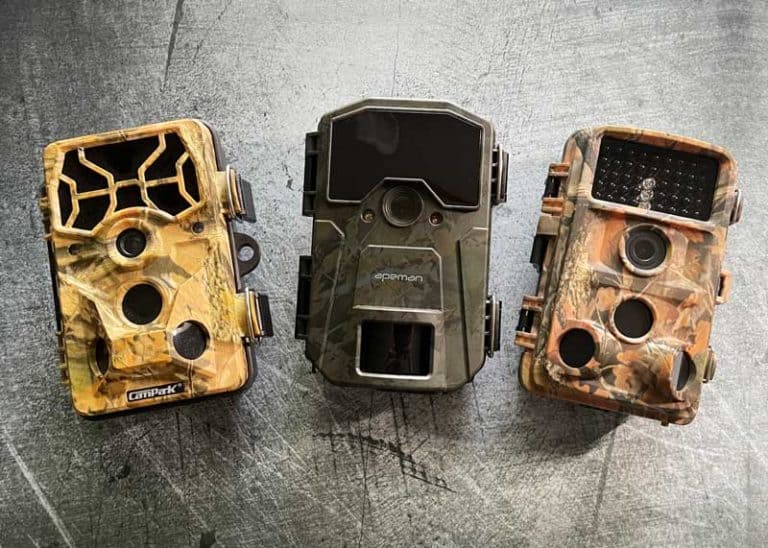11 Best Trail Cameras for Wildlife Photography (Compared)
So you noticed an animal trail near your home and want to see what’s there? Nice. Here are the best trail cameras for capturing wildlife. They are reviewed and organized by the following categories: night vision, LTE 4G, under $100, premium, 4K.
Top Pick: If I had to choose one – out of all these options – I recommend the Bushnell Trophy Cam HD. It has all the primary features, has been field-tested, and comes super well-reviewed. It shoots 20MP photos, 1080p video, and comes with night vision, and has a 0.1-second motion sensor.
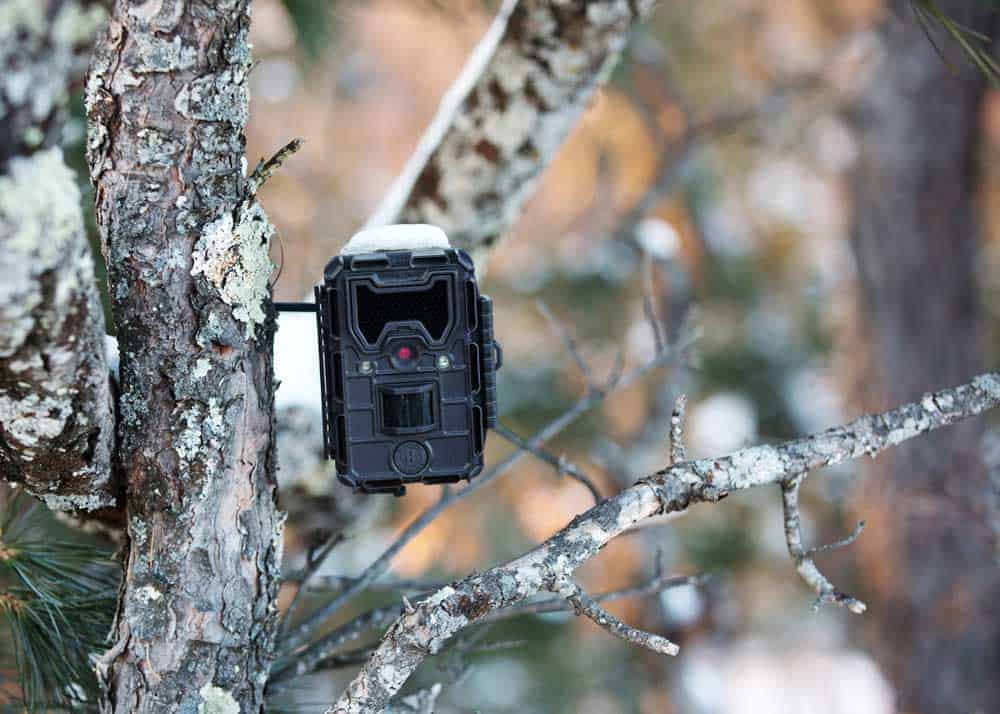
Why trust me? I own three trail cameras and have been shooting with them for many years.
Trail cameras are great for photographing wildlife and nature. Having a camera that allows you to learn more about the outdoors around you can make you feel safe as well as let you create a management plan if needed.
It can be overwhelming to sort out all of the trail camera features. There are hundreds of cameras on the market so we came to the rescue and narrowed it down for you.
11 Best Trail Cameras for Wildlife Photography
Here are the 11 best trail cameras – organized by primary features: night vision, LTE 4G, under $100, premium, and 4K.
Before we get started with all the specific details, here’s my pick for the best trail camera: Bushnell Trophy Cam HD. See availability on Amazon or B&H Photo
In this footage by Robert Bush, you’ll see bears, deer, birds, bobcats, beavers, deer, and more – all caught on his trail camera.
Okay, now back to business. Here are the details on the best trail cameras for capturing animal footage.
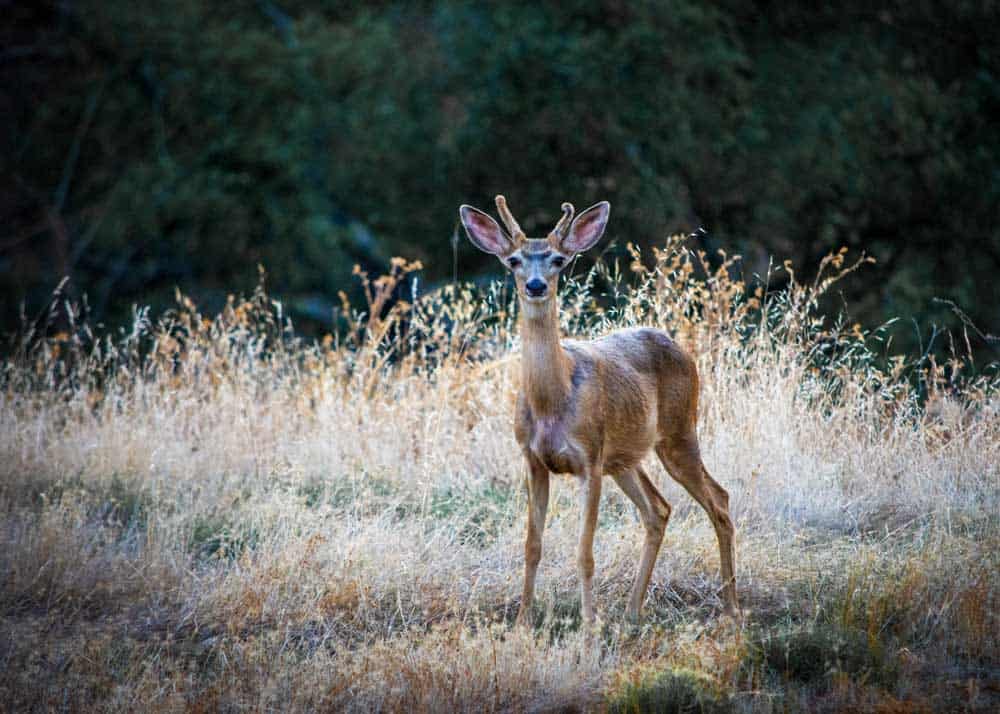
Night Vision Trail Cameras
Most times if you are interested in capturing wildlife then you will be looking for a night vision trail camera.
It is typical for most wildlife animals to come out at night whether they are on the hunt for dinner or simply just interested in your backyard. Therefore, having a night vision trail camera is ideal.
1. Bushnell Trophy Cam HD Trail Camera
The Trophy camera is an excellent camera to watch wildlife with as it can register motion up to 80 feet away.
The camera is built with a hard shell making it guaranteed to last through hard weather conditions, including temperatures as low as -5°F (-20°C) and as high as 140°F (60°C).
It also has many other features including:
20 MP photo resolution
- 1080p video resolution
- Audio recording
- Extended battery life
- LED night vision flash
- Infrared motion sensor
- See availability on Amazon or B&H Photo
The Bushnell Trophy Trail Camera can be easily mounted to a tree or post with the security strap that it comes with. Considering this camera comes in camo or brown, it is perfectly camouflaged in the daytime and the nighttime.
Camouflage is one important way to hide your camera. Here are 7 hacks to hide your trail camera from other humans.
2. Meidase P60 Trail Camera
This nice unit by Meidase shoots 1296p video at 30 frames per second. It has 100-foot night vision and a 0.1-second trigger speed.
- 32 MP photo resolution
- 1296p video resolution
- Audio recording
- Extended battery life
- LED night vision flash
- Infrared motion sensor
- See availability on Amazon
Color display of 2.4″ for viewing and composing footage. It also has an IP66 waterproof rating.
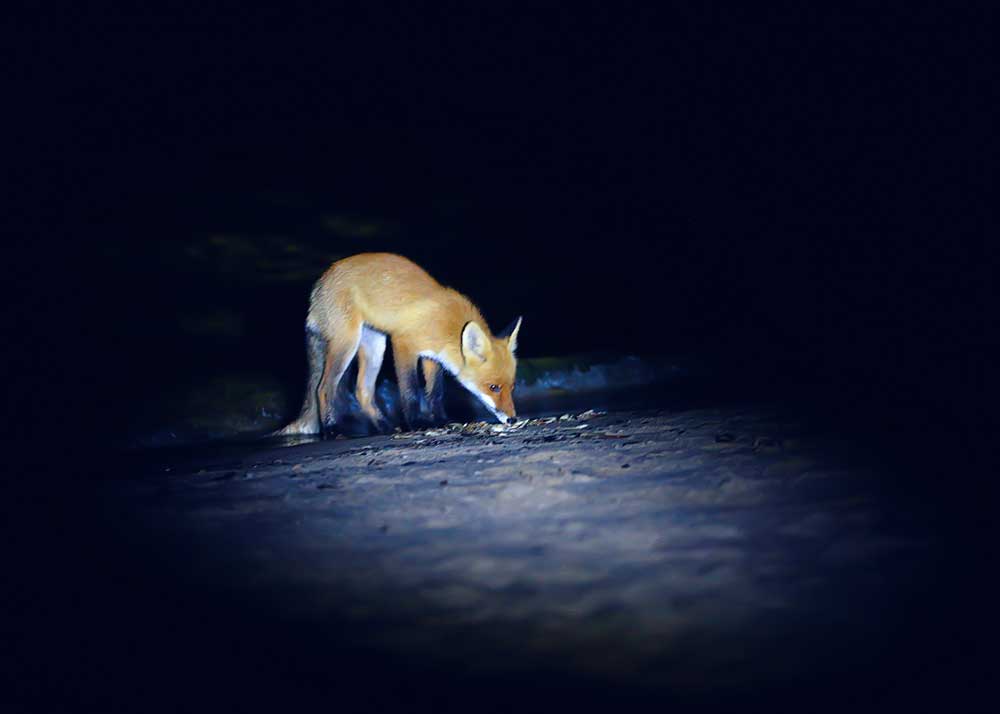
LTE 4G Trail Cameras
LTE trail cameras typically have a higher cost than wireless ones, primarily because of the need to purchase a monthly plan. There are obvious benefits – you’ll be notified of new footage even if you are hundreds of miles from your location.
3. Spartan 4G LTE GoCam
With a class-leading image-quality camera, you are sure to get excellent results with this trail camera. Considering it is a 4G LTE camera, you can buy a Verizon or AT&T plan through Spartan.
It is typically an extra $5 a month through your phone carrier. This is not a real downfall as long as you consider the other features included:
Extended battery life
- Blackout flash invisible LED
- Date and time stamps
- Powered by AA batteries
- 480 p video resolution
- 8-megapixel photo resolution
- See availability on Amazon
The Spartan 4G LTE GoCam is recommended if you do not intend to use your camera for extended periods. However, the batteries and the 32g SD does come in the package deal making it fairly easy to gather footage right away.
4. Creative XP LTE 4G Cellular Trail Camera
One of the best features of the Creative XP trail camera is the inclusion of the storage SD card and the cellular SIM card with 500 free photos.
The footage will be directly sent to your phone or email if you are connected to Wi-Fi, making it easy to access your images.
The Creative XP has one of the more affordable data plans through AT&T for only $8 per 1,500 photos. You can also bank on having these features too:
Night vision
- 65 feet range
- 1080p video resolution
- 12-megapixel photo resolution
- No Glow LED
- Solar panel compatibility
- Waterproof
- See availability on Amazon
With a 110-degree angle to capture images and a 0.35-second trigger, you are guaranteed to be able to see wildlife from all distances in real time.
5. Creative XP 3G Cellular Trail Camera
While almost identical to the Creative XP 4G camera, the main differences are the generation and the price. With the generation of this camera being a 3G, it entails that the downloads of the images and videos will be slower to access.
Typically a 4G phone can access downloads at 300mbps whereas 3G is only 21mbps. The price of the camera comes in at roughly $100 less than the 4G.
It includes some of the same features:
Night vision
- 65 feet range
- Solar panel compatibility
- Waterproof
- 1080p video resolution
- 12-megapixel photo resolution
- No Glow LED
- See availability on Amazon
You will still receive a SIM Card and 32g SD card compatible with AT&T or T-Mobile, as well as a battery pack. The Creative XP 3G Cellular Trail Camera is still a great choice, it just requires a little more patience when accessing your photos.
Here are 4 benefits of using a cellular trail camera.
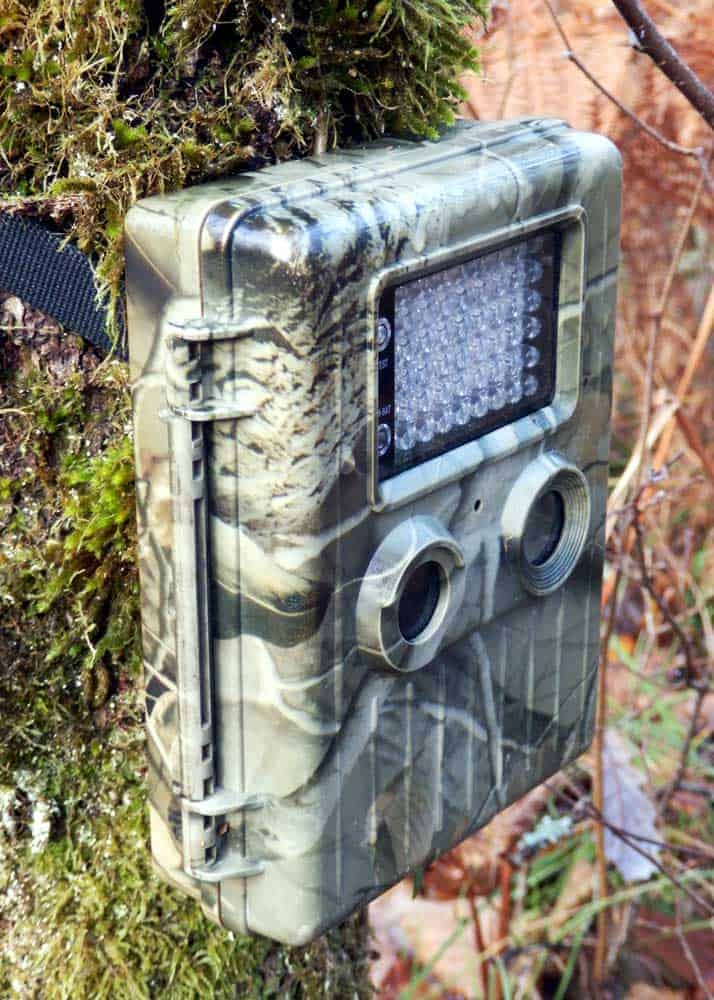
Trail Cameras Under $100
Just because certain trail cameras are under $100 does not mean they should be valued any less. These cameras can still provide some of the best footage and might even have more of your desired features than the pricer ones.
6. Meidase SL122 Pro Trail Camera
With an upgraded version, this camera brings a lot to the table. It has a very easy-to-use TV remote-style keypad and a 0.2-second trigger speed to make it easy and quick to capture any wildlife on camera.
With an impressive 120-degree angle and 82-foot distance detection, you will not be missing many creatures that come near your device. Also, consider the other features the Meidase comes equipped with:
Night vision
- 16-megapixel photo resolution
- 1080p video resolution
- No Glow LED
- Waterproof
- 6 month battery life
- See availability on Amazon
The Meidase SL122 Pro provides incredibly low power consumption making sure your camera will stay on for up to 6 months, however, the batteries are not included.
With a 2.4″ screen, we highly recommend this camera if you are looking to get the best bang for your buck.
7. WOSODA Trail Camera
This camera comes stacked with many features for under $100. As one of the least expensive cameras on the market, here is why it still competes:
16-megapixel photo resolution
- 1080p video resolution
- LED night vision
- Low Glow lighting
- 65ft range
- Waterproof
- See availability on Amazon
As it captures high-resolution photos and videos. It also produces full color in the day and black and white in the night. You can access the SD card directly on the camera or remove it and look at them on your home desktop.
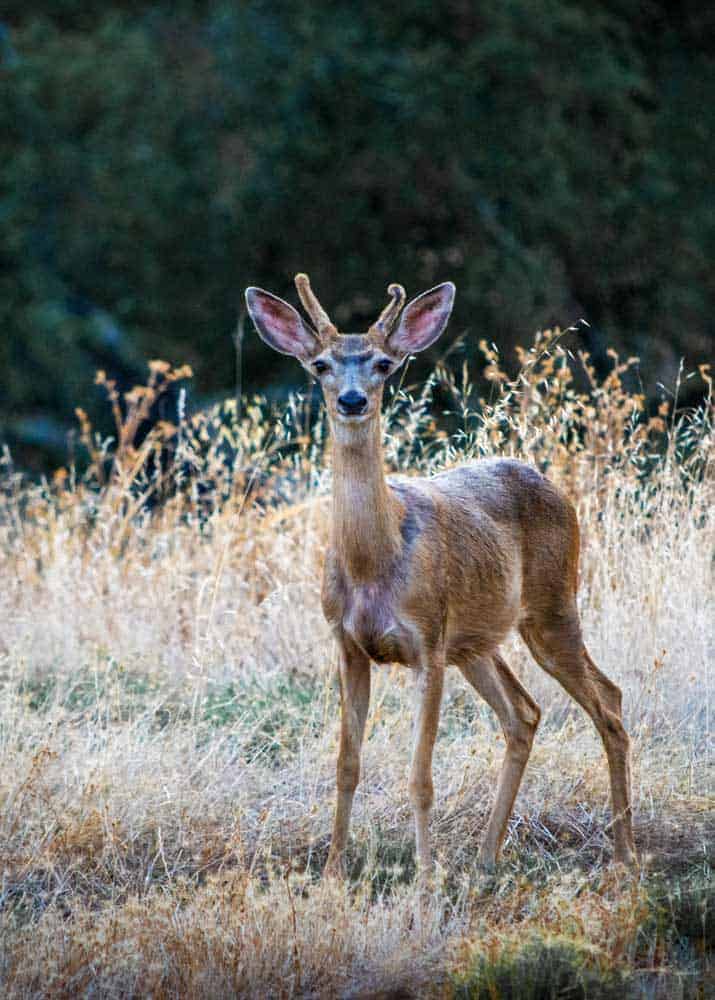
Premium Trail Cameras
With some of the best ratings and features on the market, premium trail cameras will ensure satisfaction. They are able to produce some of the best footage and always guarantee impressive features and outcomes.
8. Campark Trail Camera with Solar Panel T80
One of the best features of this camera is simply the solar panel bundle. This will ease your mind knowing it is purchased together, ensuring that this solar panel is compatible with this camera.
The solar panel will allow for indefinite power as long as there is sun. Remember to place your trail camera in a spot that is likely to get a fair bit of sun.
Although the solar panel power source is a reason to purchase this camera alone, there are some other features that bring a strong rating with the Campark Trail Camera:
20-megapixel photo resolution
- 1296p video resolution
- 65ft range detector
- Wi-Fi and app remote control
- Infrared lighting
- Waterproof
- Night vision
- See availability on CamPark
The Campark Trail Camera Solar Panel Bundle is an excellent choice and is designed for all Campark trail cameras. The T80 shoots at 20MP still photos and has a 65 foot triggering distance.
9. Bushnell Impulse Cellular Trail Camera
Compatible to either AT&T or Verizon, this trail camera allows you to watch animals right from your home.
One of its best features is the location alerts the camera will send to your phone if there is motion detected. Plus it shoot connects via Wi-Fi, Bluetooth, and 4G.
Some of the other great features include:
20 megapixel photo resolution
- 1080p video resolution with audio
- Wi-Fi and Bluetooth connectivity
- Lithium batteries or solar panel power
- See availability on Amazon or B&H Photo
The Bushnell Impulse Cellular Trail Camera allows you to control your camera from up to 150 feet away, letting you be in your vehicle or home base and still being able to watch nature passing by.
10. Browning Trail Camera
One of the features the Browning camera offers is a multi-shot mode. This camera will burst up to 8 photos each time there is movement detected on the camera. The Browning camera also includes a strap mount, a pack of batteries, and an SD card.
Add this camera to your cart for these reasons as well as:
1080p video resolution
- 20 MP photo resolution
- Night vision
- 512GB SD card
- 120 feet range
- See availability on B&H Photo
The 120 feet range is one of the many impressive features this camera has to offer. We recommend the Browning Trail Camera for excellent photo and video results.
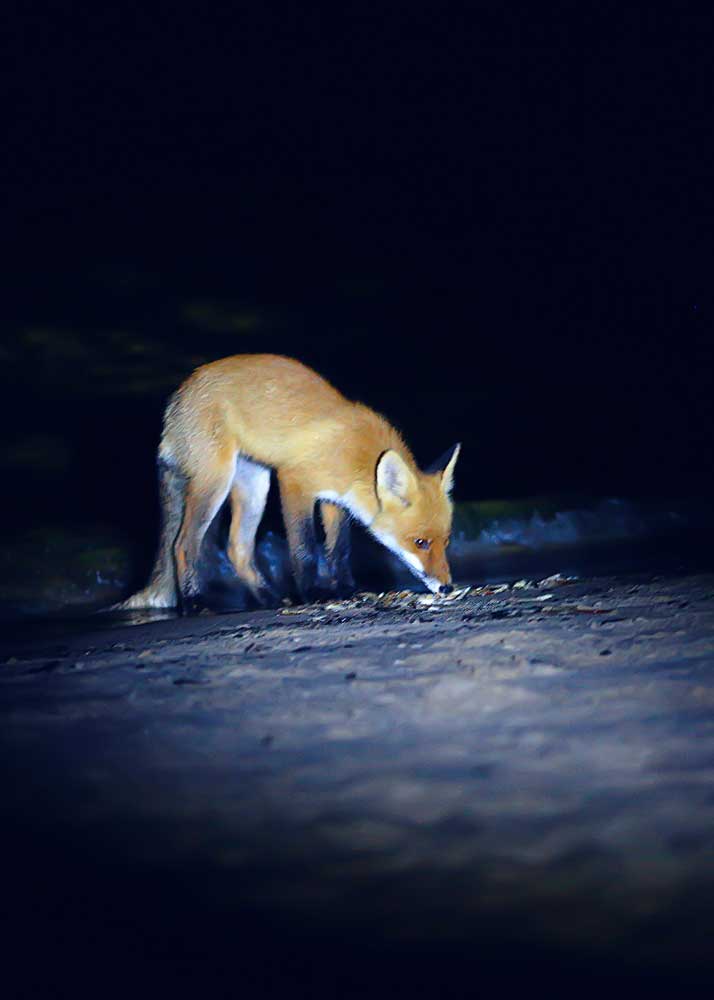
4K Trail Camera
If you are more interested in capturing video footage than a 4k trail camera is for you. 4k entails that you will be receiving the best quality video in high performance.
This will make it easy and enjoyable to watch your film after a few weeks of capturing videos.
11. Stealth Cam Dual Sensor DS4K
As this camera is capable of taking photos, it is best known for its video quality. Ranging from 720p to 4k, you will be able to set your resolution to ultra high definition to receive the best footage possible.
The Stealth Cam also provides:
Infrared light day and night
- 30 megapixel photos
- 4K video resolution
- No Glow flash
- 100ft range
- Battery powered
- Waterproof
- 256GB SD card
- See availability on Amazon
The footage will be easy to transfer from the camera to a computer using a USB cord. The DS4K shoots and impressive 30MP photos and 4K video. This is the best-resolution trail camera I’ve found yet.
7 Trail Camera Features
Depending on your motivation to capture wildlife and nature will depend on what type of features you are looking for in a trail camera.
Some questions to answer before picking out a camera might include:
- Are you gathering research?
- Are you a landowner?
- Are you in need of home security?
- Are you looking to create a management plan for wildlife rescue?
- Are you simply just wanting to photograph the great outdoors?
Once you have answered the above questions than you will have a better idea of what type of trail camera you are in search of.
Factors to consider when choosing your trail camera:
Lighting: 5 Types
There are five types of lighting available on trail cams. The type you choose will affect image quality, stealth mode, and unit price.
- Infrared vs LED: Infrared allows you to capture black and white objects, typically better for night time. LED can record day time and night time photos, however LED does take more energy to power.
- White Flash: A bright white light that will illuminate the object, capturing the image in full color during any time of the day. However, it will startle the animal and may cause them to be stunned for a moment or two.
- Low Glow (AKA Red Glow or Infrared): A dim red glow that will produce black and white images only. Great for capturing images at night.
- No Glow (AKA Black Infrared): There is no visible flash to the animal which allows more incognito capturing. Also great for landowner and security purposes, however only produces black and white photos.
- Flash Range: Consider how far away you want to be able to capture the object, higher flash ranges can help reach farther distances.
Resolution: Photo and Video
- Photo Resolution: Look for the megapixels (MP) when it comes to photo resolution. Typically the larger the megapixels the sharper the image will appear. I recommend a trail camera with high MPs if you are interested in strictly capturing outdoor wildlife and nature photography.
- Video Resolution: Similar to photos, the higher the MP the sharper the video. Basic video resolution is typically 640×480 while 1080p is more high definition. In fact, 1080p is the most common and is known as HD. What are you trying to capture? Knowing that will help you decide which resolution level is ideal.
How much memory do you need? Here’s how many photos and minutes of video per GB of SD card memory.
Night Vision
In conjunction with the lighting, night vision quality will mostly be determined by the lighting.
Some of the most popular cameras have color footage in the day time and black and white footage for night time, however with starlight night vision you will be able to record night time footage in full color.
Audio Recording
Majority of trail cameras that have video will also record audio. Audio can be necessary for research and security purposes so make sure if that is something you are using a trail camera for than the camera you decide on is capable.
And having audio really adds to the moment that that large bear or wildcat walks by on the trail.
Power
- Lithium Batteries: Long lasting batteries that are durable in all weather conditions. Many lithium batteries can last up to a year and give more consistent power. One tip to remember is to never mix and match lithium batteries, always keep the same batch paired together.
- Solar Panels: As long as the sun is shining, your trail camera can be powered indefinitely. Just about any model that has an external port is compatible with a solar panel. Some models come with included solar panels. Or you can add one to any panel with an externa power port. The Campark trail camera solar panel is a popular option to eliminate batteries.
Data Storage
Most trail cameras use SD cards to store photos and videos. If you intend to be taking strictly photos or the occasional video, then you might consider a larger capacity of storage space.
Depending on the size desired, an SD card can hold up to tens of thousands of photos. These are typically bought separate from the camera itself and we recommend double checking the compatibility of the camera to the card and having more than one just in case.
Wireless
Wireless cameras allow you to download images directly from the camera to your phone or computer. This is necessary if you don’t have the time or need to go out into the yard to fetch your camera, you can typically access the information from a fair distance away.
You can also look at your footage on more than one camera through specific camera networks. If you do not have wireless, the other option is cellular, allowing you to access your footage by using and paying for cellular data (LTE).
Okay, now it’s time to program your trail camera to start filming.

More reading: How I made a deer camera with my GoPro
What Trail Camera Will You Use?
As there are many cameras on the market to choose from, you ultimately can’t go wrong. All of the trail cameras above have specific and personalized features that make each one of them great, it all simply depends on what you are trying to get out of it the most.
Which is the best trail camera for you? I would love to hear which model you chose and where you plan to use it. Join me below!





